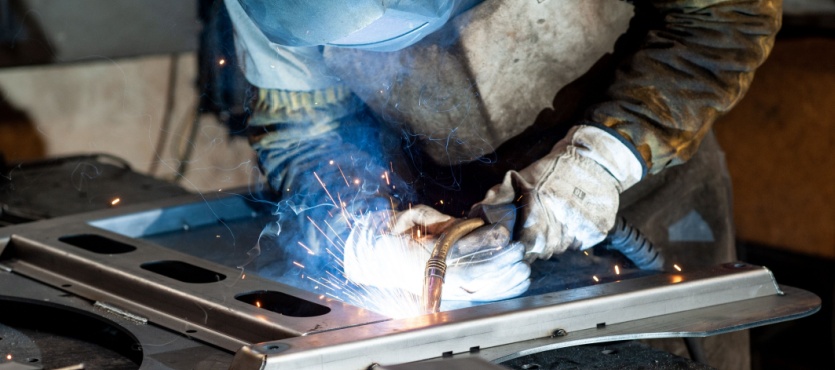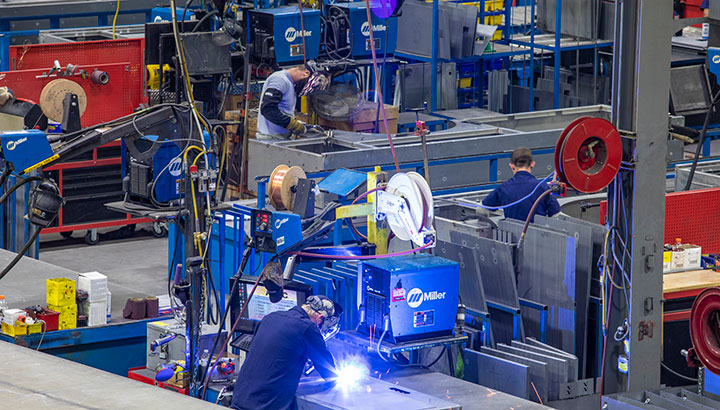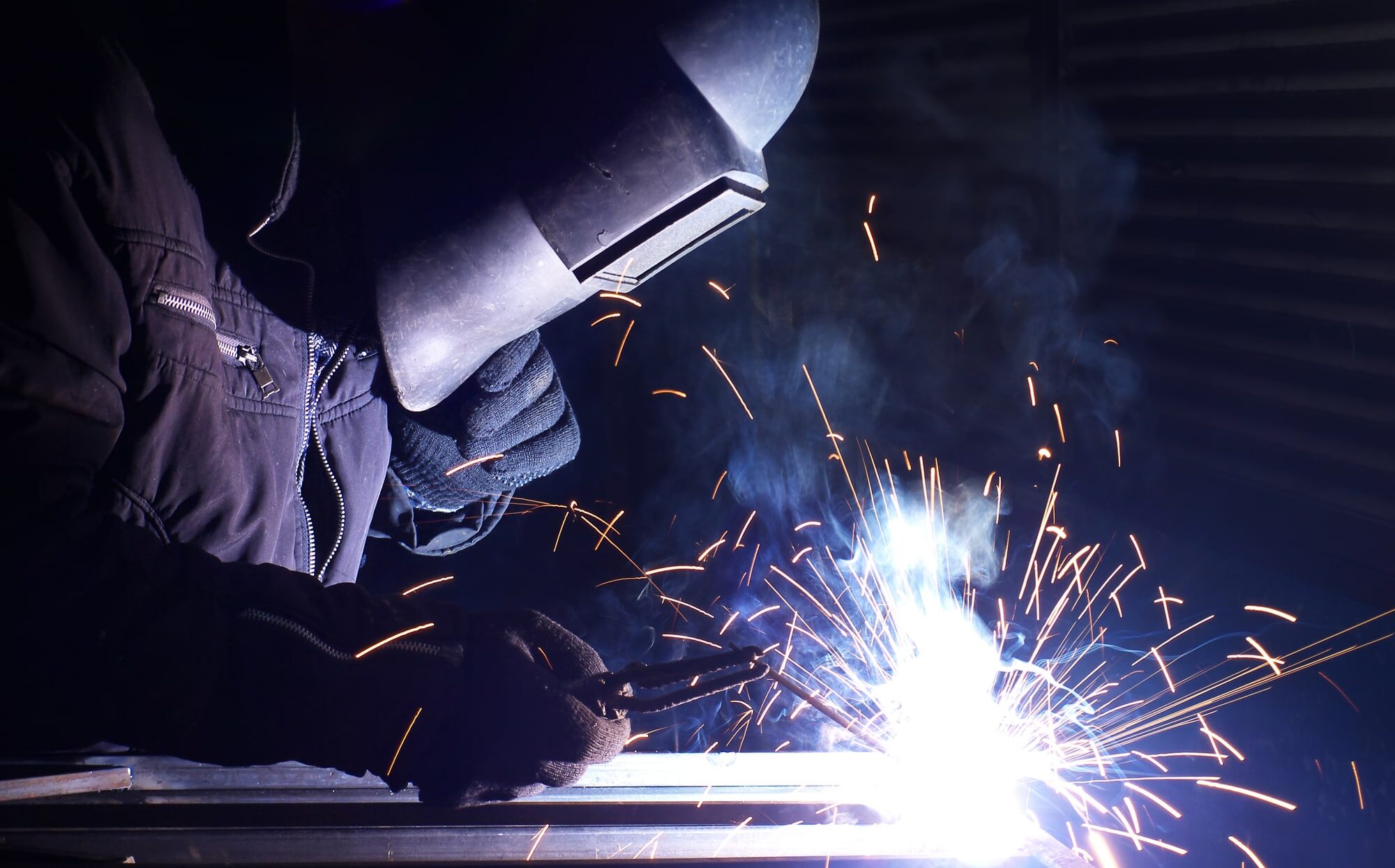Common Welding Repair Service Issues and Exactly How to Address Them Successfully
Welding repair services commonly encounter a range of concerns that can endanger the integrity of the end product. Usual troubles consist of poor penetration, porosity, and imbalance, amongst others. Each problem offers distinct difficulties that need specific strategies for resolution. Recognizing these issues is crucial for welders intending to enhance their end results and abilities. This conversation will explore these usual welding repair work concerns and effective methods to address them.
Insufficient Infiltration
Inadequate infiltration happens when the weld metal falls short to fully fuse with the base material, resulting in weak joints and possible architectural failures. This concern frequently comes from insufficient heat input, wrong electrode angle, or incorrect welding rate. Welders may experience insufficient infiltration as a result of a miscalculation of the needed specifications for a certain material thickness or type. In addition, contamination on the base material's surface can hinder efficient bonding, aggravating the problem. To deal with poor penetration, welders must ensure appropriate settings on their devices and maintain a clean job surface area. Normal evaluation of welds is recommended to identify any type of shortages early, permitting prompt corrections and the prevention of endangered architectural integrity in welded assemblies.
Porosity
Porosity is a common defect in welded joints that materializes as small gas bubbles trapped within the weld metal. This issue can endanger the stability of the weld, resulting in minimized stamina and prospective failure under stress and anxiety. Montana Mobile Welding and Repair. Porosity usually emerges from contamination, dampness, or incorrect welding methods, which allow gases to leave right into the molten weld swimming pool. To attend to porosity, welders need to ensure appropriate surface preparation, preserve a tidy working atmosphere, and make use of ideal welding parameters. In addition, choosing the best filler product and shielding gas can reduce gas entrapment. Normal assessment and testing of welds can help determine porosity early, assuring prompt rehabilitative activities are taken, thereby maintaining the quality and dependability of the bonded structure
Misalignment
Imbalance in welding can arise from various variables, consisting of improper arrangement and thermal expansion. Understanding the origin is necessary for efficient resolution. Numerous correction strategies are readily available to realign elements and assure structural honesty.
Sources of Misalignment
Welding misalignment typically stems from a selection of underlying concerns that can compromise structural honesty. One key reason is inappropriate fit-up of components before welding, which can result in voids and irregular surfaces. Variants in thermal growth throughout the welding procedure can additionally result in distortion, especially if the products being joined have various coefficients of development. Additionally, poor fixturing and securing may fall short to hold elements safely in position, resulting in movement during welding. Improperly maintained equipment, including welding machines and tools, may present variances in the weld grain, more contributing to imbalance. Operator mistake, stemming from inadequate training or experience, can additionally play a considerable role in developing misaligned welds.

Adjustment Techniques Readily Available
Addressing misalignment effectively needs a combination of rehabilitative strategies tailored to the particular problems available. One common approach is using jigs or components to hold parts in the correct setting during welding, guaranteeing consistent placement. In addition, preheating the products can help in reducing distortion and improve fit-up. For considerable misalignment, mechanical realignment strategies, such as using hydraulic jacks or clamps, can be employed to remedy the placement prior to welding. Post-weld heat treatment may also be required to relieve stress and anxieties brought on by misalignment. Ultimately, mindful inspection and modification during the setup stage can avoid misalignment problems from becoming considerable problems, advertising a smoother welding process and boosting total structural integrity.
Distortion
Distortion is a common difficulty in welding that can arise from various aspects, consisting of uneven home heating and cooling. Understanding the sources of distortion is crucial for applying reliable avoidance strategies. Addressing this problem not just enhances architectural stability but also improves the total high quality of the weld.
Reasons for Distortion
When subjected to the extreme warmth of welding, products frequently go through modifications that can cause distortion. This sensation mostly occurs from thermal growth and contraction during the welding procedure. As the weld area warms up, the product increases; upon cooling, it gets, which can produce inner stress and anxieties. On top of that, unequal heating throughout a work surface can worsen these stress and anxieties, resulting in bending or bending. The sort of material also plays a substantial function; metals with differing thermal conductivity and coefficients of development might react in a different way, causing uncertain distortions. Poor joint layout and insufficient fixturing can contribute to imbalance throughout welding, boosting the probability of distortion. Recognizing these causes is vital for reliable welding repair and avoidance methods.
Avoidance Techniques
Reliable avoidance methods for distortion throughout welding emphasis on controlling heat input and making certain correct joint style. Maintaining a consistent heat input aids to reduce thermal development and contraction, which can result in distortion. Utilizing strategies such as preheating the work surface can additionally decrease the temperature level gradient, promoting uniform heating. Furthermore, choosing appropriate joint styles, such as T-joints or lap joints, can improve stability and decrease anxiety concentrations. Executing correct fixturing to safeguard the workpieces in location additionally aids in maintaining positioning during the welding procedure. Finally, staggered welding series can distribute warmth extra uniformly, avoiding local distortion. By using these methods, welders can considerably reduce the likelihood of distortion and boost the overall top quality of their welds.
Fracturing
Breaking is an usual problem run into in welding repair work, often resulting from different factors such as incorrect cooling prices, product selection, or insufficient joint prep work. The incident of splits can greatly compromise the honesty of the weld, causing potential failures during operation. To address this concern, welders have to first examine the origin, making certain that products work and appropriately picked for the specific application. In addition, managing the cooling rate throughout the welding procedure is necessary; fast cooling can induce anxiety and bring about fracturing. Correct joint layout and preparation also contribute to reducing the danger. Implementing these techniques can enhance weld top quality and toughness, eventually lowering the chance of breaking in ended up weldments.

Insufficient Combination
A substantial issue in welding fixings is insufficient combination, which takes place when the weld steel does not adequately bond with the base product or previous weld passes - Montana Mobile Welding and Repair Belgrade. This defect can result in weak points in the joint, possibly compromising the integrity of the welded structure. Variables adding to incomplete fusion include not enough warm input, inappropriate welding strategy, and contamination of the surfaces being signed up with. To resolve this problem successfully, welders should guarantee appropriate pre-weld go to my site cleansing and surface prep work, as well as adjust their welding parameters to attain ample infiltration and fusion. Routine assessment during the welding process can also help determine insufficient blend early, enabling for timely restorative measures to improve the total top quality of the weld
Overheating
While welding fixings can enhance architectural stability, overheating offers a significant obstacle that can lead to material destruction. Too much warm throughout welding can modify the mechanical properties of steels, leading to reduced stamina, increased brittleness, and warping. This phenomenon is especially vital in high-stress applications where structural dependability is critical. Identifying getting too hot can involve visual evaluations for staining or distortion, along with checking temperature throughout the welding process. To alleviate the risks connected with overheating, welders ought to utilize suitable methods, such as controlling heat input, readjusting traveling speed, and making use of appropriate filler materials. Furthermore, carrying out pre- and post-weld heat treatments can help restore product read the article residential or commercial properties and enhance the overall quality of the repair service, making sure lasting performance and safety.
Often Asked Concerns
What Are the Common Indications of a Welding Problem?

Just How Can I Test My Welds for Quality?
To examine welds for quality, one can utilize visual examinations, ultrasonic screening, and radiographic approaches. Each method assures architectural stability, identifies defects, and verifies adherence to specified criteria, eventually boosting the reliability of the welded joints.
What Safety and security Safety Measures Should I Take While Welding?
When welding, one ought to prioritize security by putting on ideal personal protective equipment, ensuring proper ventilation, safeguarding combustible products away, maintaining a tidy office, and understanding browse around these guys surroundings to protect against accidents and injuries.
Can I Repair a Weld Without Redesigning the Entire Joint?
Repairing a weld without remodeling the entire joint is feasible, depending on the damage (Montana Mobile Welding and Repair Belgrade Welding). Strategies such as grinding, including filler material, or making use of a welding process can effectively resolve specific flaws while preserving the surrounding structure
What Tools Are Vital for Effective Welding Repairs?
Crucial devices for effective welding repair services include a welding machine, wire brush, grinder, safety gear, clamps, and filler products. Each tool plays an essential duty in making sure high quality and safety during the fixing procedure. Porosity usually arises from contamination, dampness, or incorrect welding methods, which permit gases to escape into the molten weld swimming pool. Inadequately kept tools, consisting of welding makers and devices, may introduce variances in the weld grain, more adding to imbalance. When subjected to the extreme warm of welding, products typically undergo adjustments that can lead to distortion. Breaking is a common issue experienced in welding repairs, usually resulting from various aspects such as improper cooling rates, product selection, or poor joint preparation. A substantial issue in welding repair work is insufficient combination, which takes place when the weld metal does not sufficiently bond with the base product or previous weld passes.